The pv magazine Awards celebrate outstanding achievement across the solar and energy storage supply chain, rewarding excellence and innovation within our industry. Our first entry window is open until April 26, 2024, providing the perfect opportunity to shine a spotlight on the achievements of your business.
Submit your business for consideration in the pv magazine Awards here.
Don’t miss out on your chance to walk away with a coveted prize.
Further details on category criteria and how to enter are available at pv-magazine.com.
We are accepting applications across the following categories:
Modules
Projects
Inverters
Manufacturing
Sustainability
Battery energy storage systems (BESS’)
Balance-of-system (BOS) components
The 2023 Award winners are…
Modules: Risen Energy, Hyper-ion
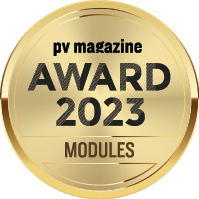
700 W-plus power output is a notable achievement in any solar module, but the 2023 Modules winner packs a heap of innovation inside to set it apart. Alongside its heterojunction (HJT) cell, Hyper-ion deploys Risen’s own patented version of busbarless (0BB) cell interconnection – branded Hyper-link, cell thickness at an industry-leading 90 to 100 micrometers, and the option of a steel frame to make a module that truly stands out.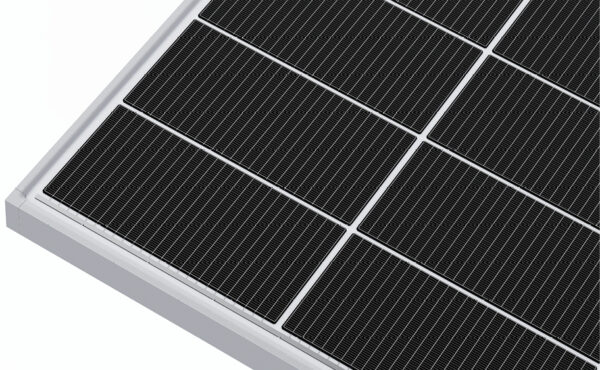
The efficiency and power results are also notable. The module datasheet confirms the Hyper-ion comes with a power range of 680-705 W, in dimensions of 2,384 mm x 1,303 mm, at a weight of 41 kg. Inside are 210 mm half-cut HJT cells.
Beyond performance, Risen has beefed up its warranty, putting it ahead of TOPCon rivals. It offers a 15-year product warranty and 30-year power warranty, guaranteeing 90.3% of nominal power output.
Projects: Solar Cooling Engineering, PV Cool Kenya
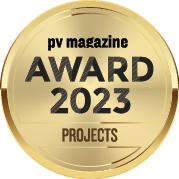
German company Solar Cooling Engineering (SCE) has taken an innovative approach to refrigeration with its PV Cool Kenya project. SCE has developed solar-powered cooling technology that is based on a sustainable refrigerant (R600a) and insulation materials.
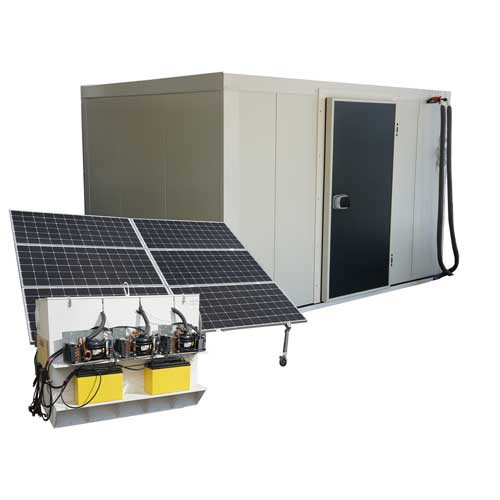
Unlike cold rooms that rely on traditional grid-tied cooling methods, the SelfChill system uses modular thermal storage to balance cooling peaks. Water is chilled and frozen, and stored in a water chiller that provides cold water to a fan coil inside the cold room. In this way, energy fluctuations can be balanced by energy stored in the form of ice.
Battery storage can be added if required, but it is not a necessary component of the system. The cooling unit itself was designed in-house, with SCE opting to create a DC unit that is powered by PV modules.
Inverters: Deye Technologies SUN-29.9-50K-SG01HP3
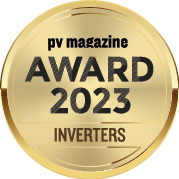
This year’s winner is Deye Technologies SUN-29.9-50K-SG01HP3 – a hybrid inverter for the C&I market. It is available in power classes from 29 kW to 50 kW and is well-suited to retrofitting. The inverter’s 400 AC output fits with older installations, making it a good candidate for revamping PV plants.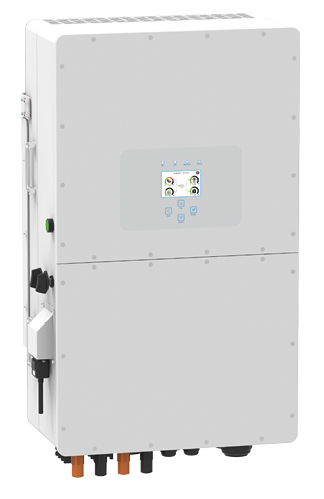
Category juror Cormac Gilligan, director clean energy technology at S&P Global, said there is a growing market for revamping and retrofitting solar systems in Europe with the addition of battery systems to increase self-consumption. He saw the flexibility of the Deye inverter as a noteworthy feature. For example, it can be cascaded into a 500 kW application and work entirely off-grid. The option to connect a diesel genset and charge the batteries that way means this inverter could meet demand in regions where weak grids are prevalent.
Manufacturing: Origami Solar, Roll-formed recycled steel frame
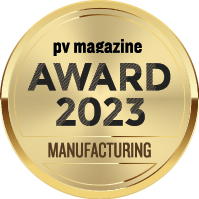
Origami Solar is rolling out production of its patent-pending steel frame design with contract manufacturers in the United States. Frames are expected to be available from the end of 2023.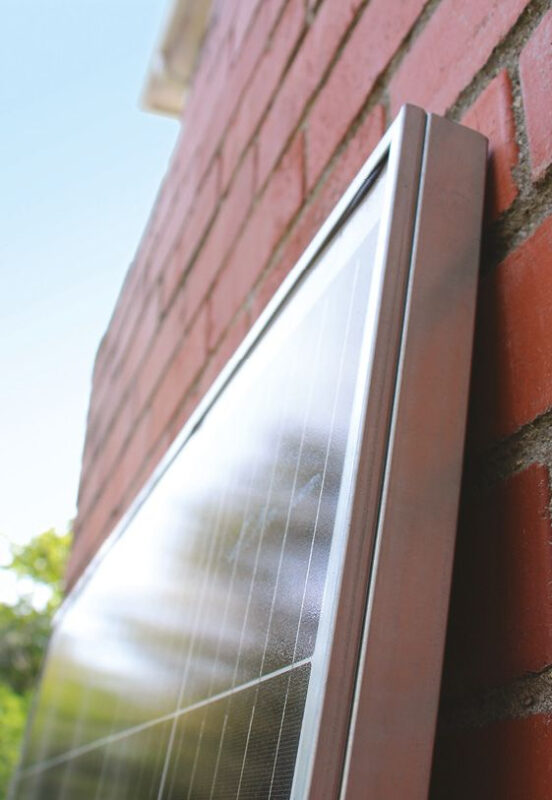
Frames are manufactured using recycled steel in a continuous process that Origami Solar says is 10 times faster than aluminum frame making, producing one frame every 15 seconds. It also claims frames have demonstrated increased stiffness in testing, making modules better equipped for heavy loading from snow or wind. Further testing is underway with partners including the US National Renewable Energy Laboratory.
On price, the company expects to be able to sell frames at least 5% lower than aluminum competitors. There is a sustainability case to be made, too. Origami Solar has worked with consultants Boundless Impact to demonstrate a significantly lower carbon footprint per module.
Sustainability: ArcelorMittal, XCarb and Magnelis
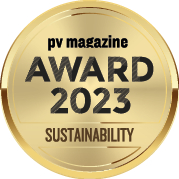
Multinational steel producer ArcelorMittal claims its XCarb steel is both long lasting and sustainable. XCarb is a certified low-carbon material and the company reports that it is made from predominantly scrap steel, with production carried out via an electrical arc furnace that uses 100% renewable energy.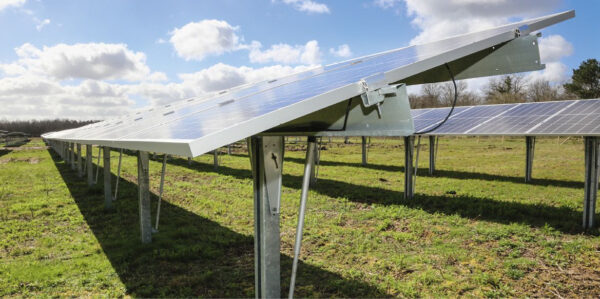
The steel producer’s Magnelis steel also boasts sustainability credentials. It is long-lived, making it suitable for solar installations in challenging environments. Magnelis steel is a double-sided hot-dip galvanized carbon steel, coated on both sides with a zinc-aluminium magnesium alloy. “Anything you can do to make a solar asset last longer is a positive climate impact,” said juror Jenny Chase, solar analyst at BloombergNEF.
ArcelorMittal has a target of achieving a 25% reduction in CO2 emissions intensity per ton of crude steel by 2030.
BESS: Fluence, UltrastackTM
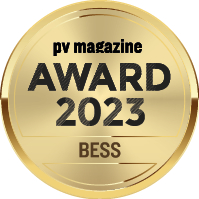
The US storage specialist Fluence has developed a storage-as-transmission asset (SATA) that can help network owners and operators to manage renewables curtailment, increase the use of power lines, and limit congestion. UltrastackTM, provides network owners and operators with fast-acting response of less than 150 milliseconds and with higher than 99% system uptime to meet the availability requirements of critical infrastructure. Its advanced control applications, some with pending patents, include synthetic inertia, power oscillation damping control, grid-forming inertia, dynamic voltage control, emergency power contribution, and black start.
Unlike “regular” big batteries, SATA projects are operated to mimic transmission line flows by injecting and absorbing power. In such applications, they can be used to bolster or even replace existing power lines, offering infrastructure planners a new, versatile solution for transmission transition.
BOS: Atonometrics, RDE300i

US-based Atonometrics is targeting utility-scale solar projects with its monitoring innovation, the RDE300i. The system performs in-situ measurement of current/voltage (IV) curves within a string of modules. This allows technicians to get a direct view of the performance of individual modules within an array, and eliminates costs associated with installing and maintaining reference modules at a site.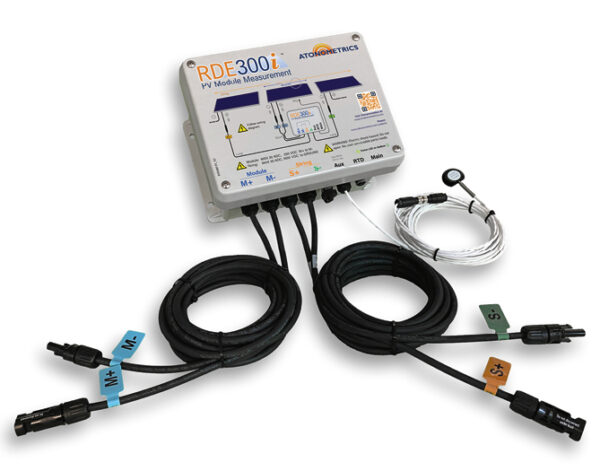
The manufacturer is keen to point out that in-situ IV curve measurement could be useful on many fronts in plant monitoring, and that it is working with laboratories and industrial partners to develop new applications for the technology.
For now, the use case for RDE300i is focused on monitoring soiling. Here the system promises more accurate results than the common approaches of reference modules or optical sensors – and it can also integrate with these systems so monitoring teams have all bases covered.
Publisher’s Pick: JinkoSolar
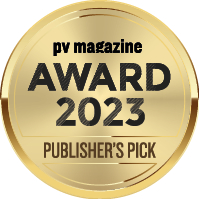
It’s high time that we recognize leading module manufacturers in this category and this is no easy task. There is a wealth of module makers with strong track records and impressive product portfolios.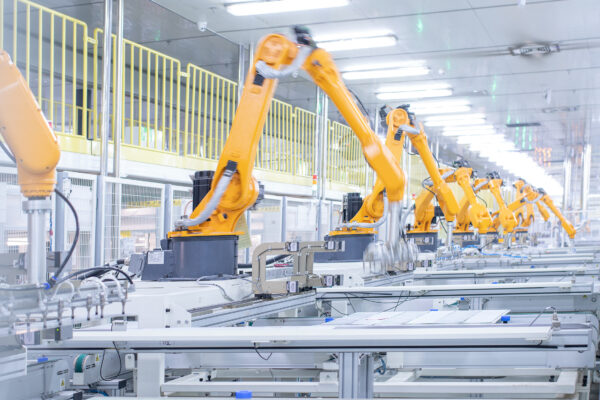
In 2023, the nod goes to JinkoSolar, which has shipped more PV modules than any other manufacturer. In November 2023 JinkoSolar hit the historic mark of 200 GW modules shipped since it delivered its first panels in 2010. The manufacturer has quickly transitioned to n-type TOPCon and the higher efficiencies it offers. In October 2023 the company announced a new n-type TOPCon cell efficiency record of 26.89% for a 182 mm cell.
But JinkoSolar is much more than just a module producer. It has expanded its product portfolio to include battery energy storage systems (BESS) to offer its customers around the world a complete solution involving both state-of-the-art modules and the latest BESS technology.
Enter here for consideration in the 2024 pv magazine Awards.
This content is protected by copyright and may not be reused. If you want to cooperate with us and would like to reuse some of our content, please contact: editors@pv-magazine.com.








By submitting this form you agree to pv magazine using your data for the purposes of publishing your comment.
Your personal data will only be disclosed or otherwise transmitted to third parties for the purposes of spam filtering or if this is necessary for technical maintenance of the website. Any other transfer to third parties will not take place unless this is justified on the basis of applicable data protection regulations or if pv magazine is legally obliged to do so.
You may revoke this consent at any time with effect for the future, in which case your personal data will be deleted immediately. Otherwise, your data will be deleted if pv magazine has processed your request or the purpose of data storage is fulfilled.
Further information on data privacy can be found in our Data Protection Policy.